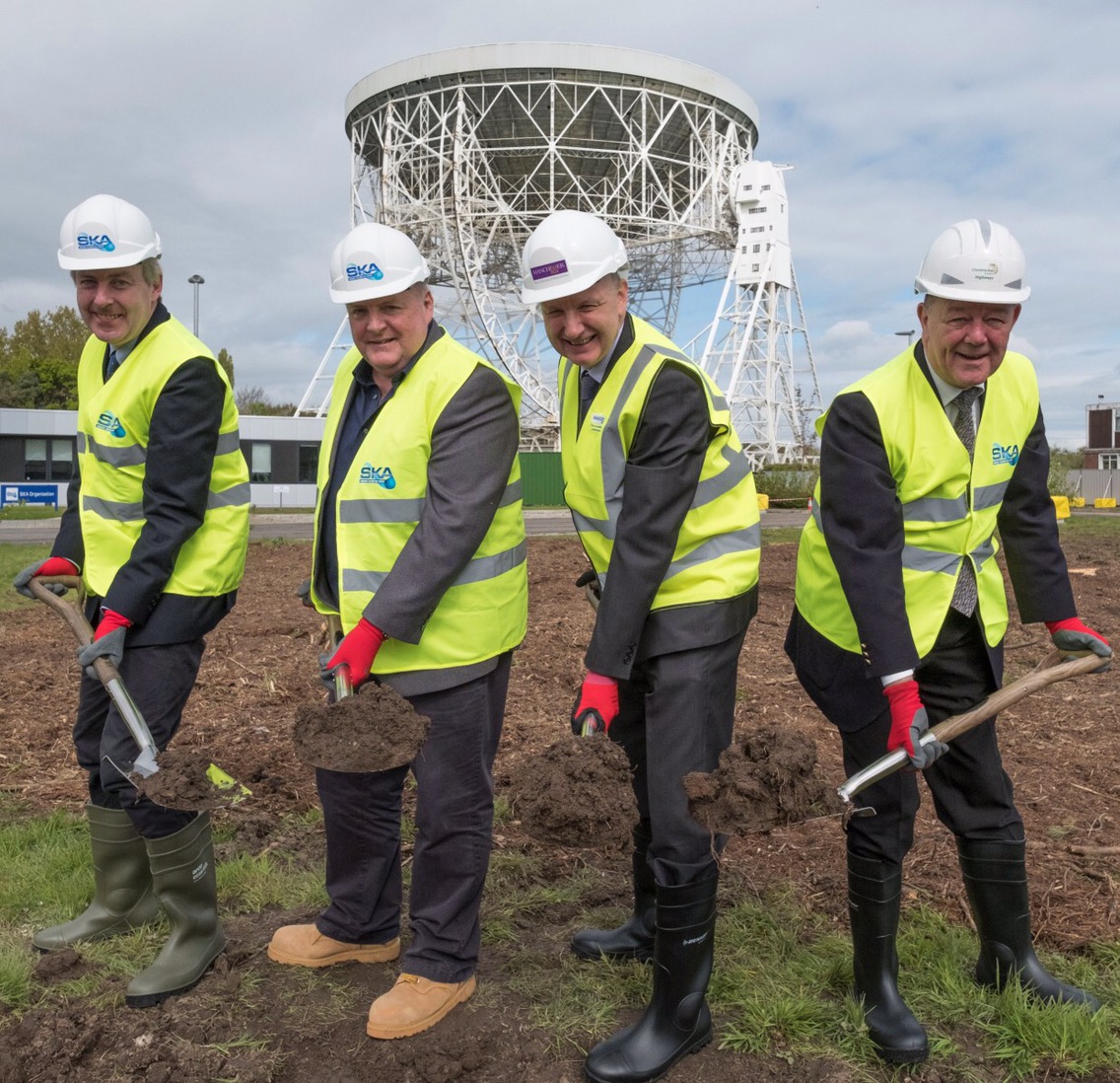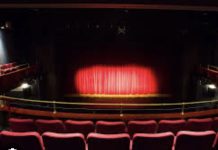A special ceremony marking the beginning of construction of the Square Kilometre Array Global Headquarters (SKA GHQ) took place last week to mark the official start of building work on the expansion of the central office for the world’s largest radio telescope.
The ground-breaking event, held on the SKA premises at The University of Manchester’s Jodrell Bank site was attended by the Deputy Vice-Chancellor of The University of Manchester, Professor Colin Bailey; the Director-General of the SKA Organisation, Professor Philip Diamond; and representatives from the Science and Technology Facilities Council (STFC) and Cheshire East Council.
The 4,200m2 SKA GHQ will eventually be home to more than 135 staff from more than 13 countries, tasked with managing the construction and operations of the Square Kilometre Array telescopes, located in Southern Africa and Western Australia.
The finished telescopes will be several times more sensitive and hundreds of times faster at mapping the sky than today’s best radio astronomy facilities.
Equipped with a 10Gbit/s connection to the national research network, the building will include some 18 meeting rooms equipped with state-of-the-art videoconferencing to work with teams spread over 20 time zones, as well as a Council Chamber which can be converted into a 159-seat auditorium for scientific conferences and public talks.
The new building will be on the Jodrell Bank site, currently operating the iconic Lovell Telescope and the UK’s e-MERLIN telescope array which is part of the School of Physics and Astronomy at The University of Manchester. The Observatory was established in 1945 by Sir Bernard Lovell and has since played an important role in a number of fields, including the study of meteors, quasars, pulsars, masers and gravitational lenses, and was heavily involved with the tracking of space probes at the start of the Space Age.
As such, Jodrell Bank has been a leader in radio astronomy for over 70 years and is now on the UK shortlist for UNESCO World Heritage Site status. Its accompanying Discovery Centre currently attracts around 165,000 visitors each year, including 22,000 school pupils on educational visits.







